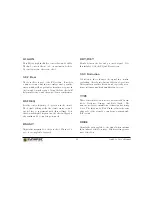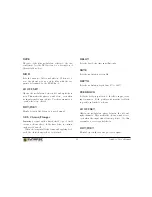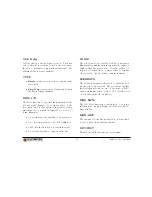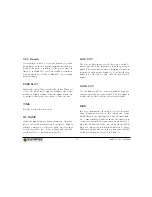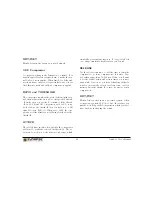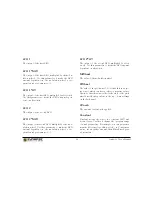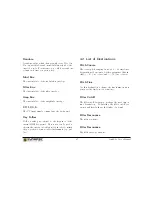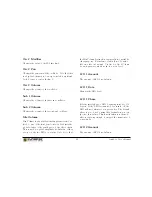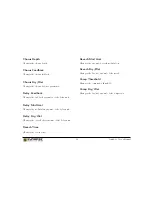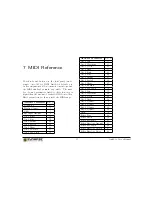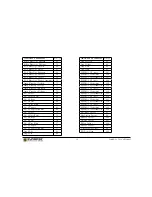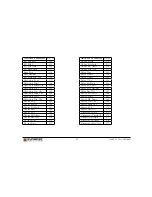
DRY/WET
Blends between the dry and processed signals.
3.8.8 Compressor
A compressor changes the dynamics of a signal. It is
usually applied last in a signal chain, to make the sig-
nal louder or more punchy. When Antidote’s delay and
reverb units are enabled, it is particularly easy to hear
the difference with and without compression applied.
RATIO and THRESHOLD
The compressor monitors the peak of the incoming sig-
nal, then reduces the level above the specified thresh-
old in the ratio you specify. For instance, if the thresh-
old is -10 dB and the compression ratio is 2:1, every
decibel above the threshold is cut in half, so a -8 dB
signal becomes -9 dB, etc. When set to 100:1, the com-
pressor acts like a limiter, not allowing levels above the
threshold.
ATTACK
The attack time specifies how quickly the compressor
will react to peaks that exceed the threshold. The at-
tack can be set down to the microsecond range, which
essentially gives instant response. For special effects
or to shape transients, higher values can be used.
RELEASE
Use the release time knob to set the time it takes the
compressor to go from compression to idle state. Typ-
ical values range from 50-200 ms. Often, you’ll want
to set the fastest attack and release times you can get
away with. As soon as you hear disturbing artifacts,
however, increase the attack or release time, or alter-
natively lower the threshold or ratio for a more gentle
compression.
DRY/WET
Blends between the dry and processed signals. Often
a compressor is used 100% wet, but other values per-
mit the so-called parallel compression, which gives yet
more freedom in shaping the sound.
24
Antidote User’s Manual
Summary of Contents for Antidot
Page 1: ...User s Manual...










